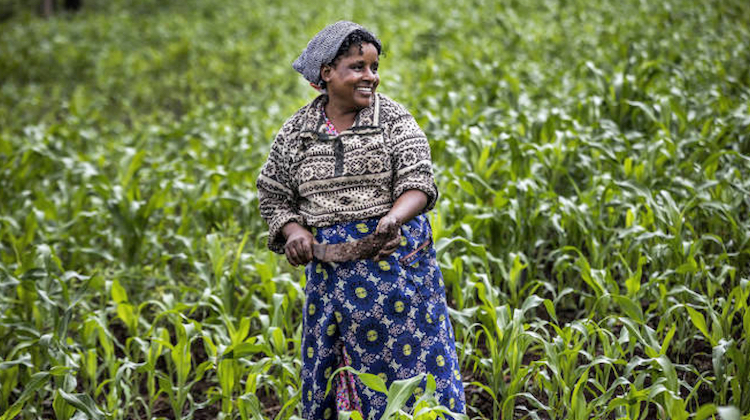By Jonathan Power*
LUND, Sweden | 26 March 2024 (IDN) — Once again, the media is presenting us with images of the mother of all famines — stretching from Yemen to Somalia, to Sudan and South Sudan, to the Central African Republic, to northern Nigeria and, most recently, to Gaza.
It’s a bad famine, but there have been bad famines in the not-so-distant past—the great Ethiopian one in 1985, which triggered the rock star Bob Geldof to organise a massive worldwide popular response. (I remember running with tens of thousands of other campaigners in London’s Hyde Park to raise money.)
Before that, in 1974, at the World Food Conference, there was a real feeling that the world was running out of food and dramatic new policies must be put in place by the richer countries.
They were, and much progress was made. Between 1990 and 2015, the proportion of children under five who had stunted growth fell from 33% to 22% of the world’s children, according to UNICEF. People who are still underfed are less severely so. 45 million children suffer from malnutrition—that is one in three children under five. In Africa, it is more than that.
Increased food production is happening all over the place. The world over, the Gross Production Value of cereals is increasing by 6.25% a year. In Rwanda, peasant farmers produced in 2015 792,000 tons of grain, which was more than three times as much as in 2000. Last year, grain production was 500,000 tons, an 11% increase. In Ethiopia, the area planted to irrigate wheat increased from 5000 hectares to over 650,000 hectares in 2022/23. Cameroon, Ghana, Zambia, Nigeria and Kenya have all increased their harvest by 50%.
If one deducts from the African statistics the famine in parts of East Africa and northern Nigeria, then African progress looks especially good. West Africa, in particular, has shown rapid improvement in food production. In Nigeria, for all its economic woes and its low growth rate, agriculture is doing well, growing far faster than the population. It is more important than the oil sector in terms of value, but oil remains the biggest filler of government coffers, so it gets all the politicians’ and media’ attention.
Growth in national income in sub-Saharan Africa is slowly but surely accelerating. Like most parts of the world, Africa was hit by the Great Recession and COVID-19, but most countries have dealt with falling agricultural commodity prices and smaller foreign markets with some success. Africa is in a strong position to take advantage of the world’s recovery. Some African countries grow at around 5% annually—some at 7%, including Rwanda and Ivory Coast. They didn’t miss a beat.
For the foreseeable future, agriculture will employ a majority of workers
It is mainly peasant agriculture, working in poor soils in difficult and uncertain weather conditions. Africa does not have the great fertile river basins of Asia, whose fertility comes from the silt that washed down through the ages from areas where tectonic activity produced mountains rich in nutrients. Nor does it have a water table near the surface, making boreholes more difficult. Much of the interior of Africa is barely worth farming. Only about 4% of arable land is irrigated.
The Green Revolution has made inroads, but much more slowly than it did in Asia, which only has two main crops: rice and wheat. Africa has a dozen food crops, and each has needed its own specialist development. This is in addition to fighting plant and animal diseases, which are much more prevalent than elsewhere. Nevertheless, one sees an increase in the dissemination of improved seeds these days.
Other aspects of technology are also making an impact. The mobile phone is number one. Already some African countries have millions. Kenya, which has pioneered applications that the rich countries have followed belatedly, has for a long time now used phones to enable peasants to purchase credit for fertiliser and other inputs, to receive information on market prices, thus cutting down the influence of middlemen, for migrants in the cities to send money home for investment, for nurses to reach remote patients and for consumers to pay with electronic money. Not least, as in India, subsidies to the poor are distributed directly without the graft of middlemen.
Perhaps the greatest single aid to improving agriculture and increasing national incomes is diminishing war. Between 1970 and the end of the century, war was all-consuming in many countries. These days, there are remnants of war in eastern Congo, terrorist war in Somalia, and civil war in South Sudan. But overall, there is little war today.
The poor are not running to stay still; they are running to make progress.
*Note: For 17 years, Jonathan Power was a foreign affairs columnist for the International Herald Tribune. [IDN-InDepthNews]
Copyright Jonathan Power
Visit: www.jonathanpowerjournalist.com
Photo: Through an FAO project teaching conservation agriculture, this Kenyan farmer is acquiring know-how that will help her better cope with droughts and other shocks. Credit: FAO/Luis Tato
IDN is the flagship agency of the Non-profit International Press Syndicate.


